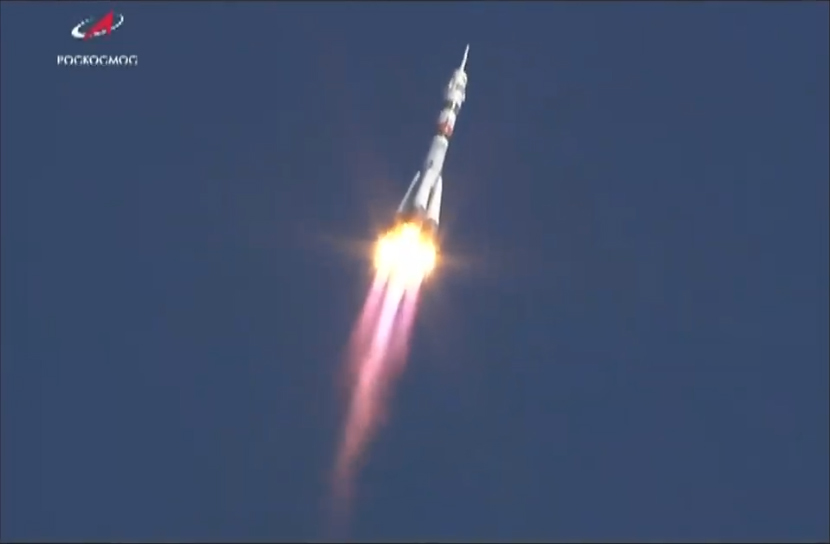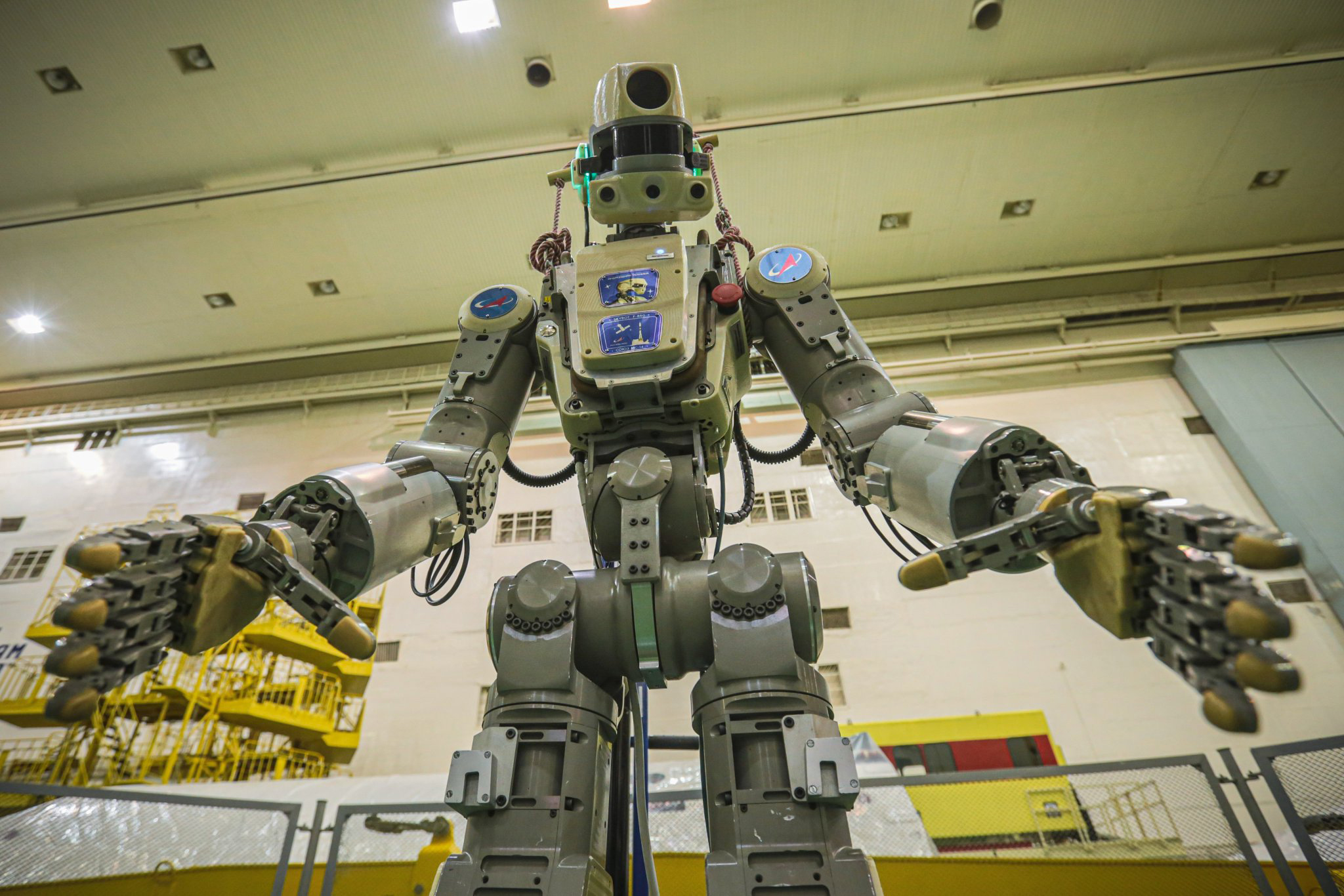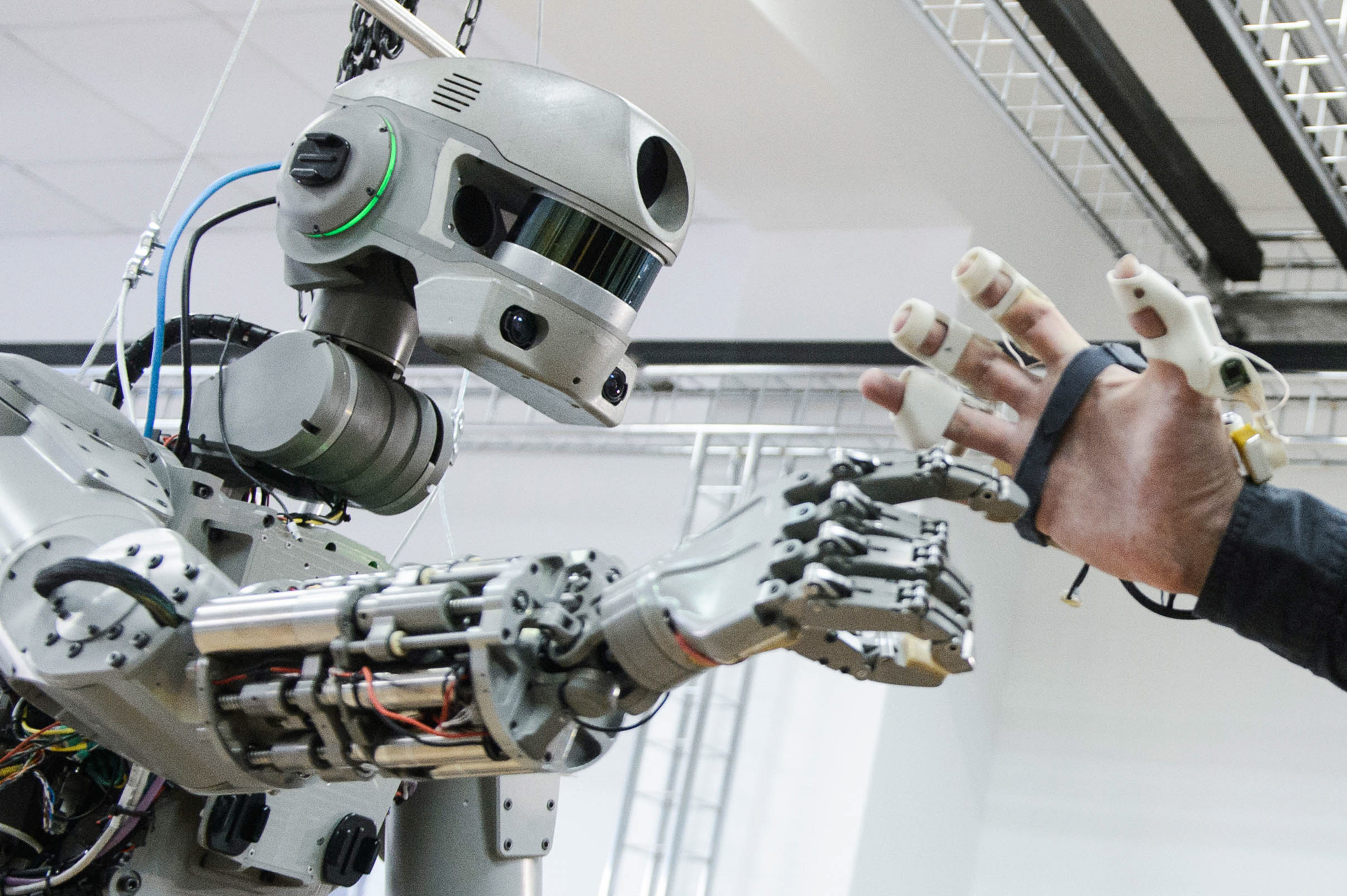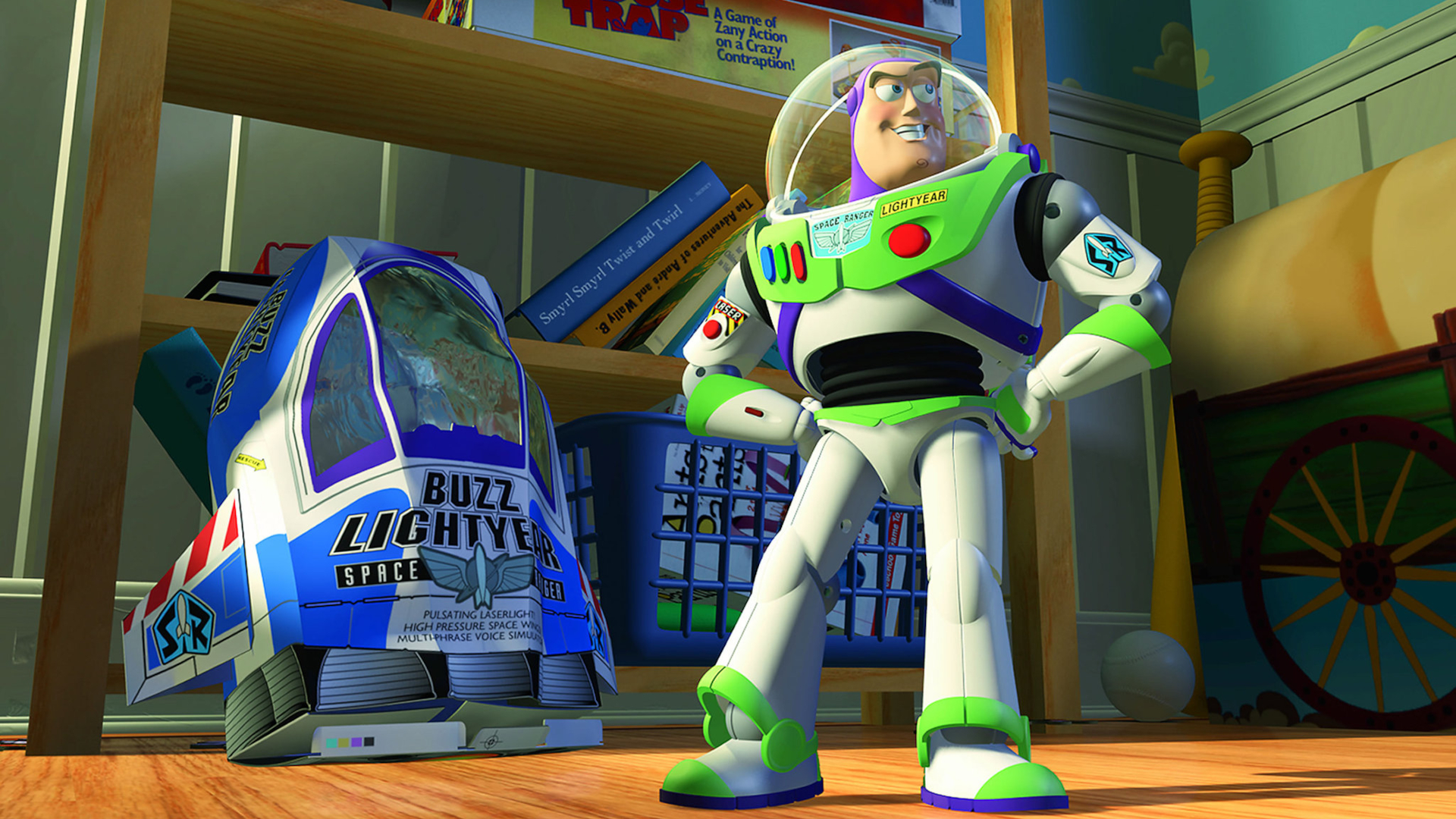Russia Launches Humanoid Robot 'Fyodor' to Space Station on Rare Soyuz Test Flight
The goal is to prove out the Soyuz 2.1a rocket for crewed launches.
Call it one giant leap for a robot. Russia has launched a humanoid robot named "Fyodor" to the International Space Station on the first uncrewed Soyuz spacecraft ever to visit the orbiting laboratory.
The Soyuz capsule — which typically carries a crew of three into space — lifted off with food, supplies and the Skybot F-850 robot from Baikonur Cosmodrome in Kazakhstan late Wednesday (Aug. 21) at 11:38 p.m. EDT (0338 Aug. 22 GMT) It was 8:38 a.m. Thursday local time at the launch site.
The Soyuz capsule launched into orbit atop a Soyuz 2.1a rocket, a variant of Russia's workhorse booster that has only flown uncrewed Progress vehicles until now. Its Soyuz MS-14 spacecraft is carrying 1,450 lbs. (660 kilograms) of supplies for the station's six-person crew.
"A flawless climb to orbit for Soyuz MS-14 in its test flight, the first launch of a Soyuz vehicle on a 2.1a booster," NASA spokesperson Rob Navias said during live launch commentary.


Navias said Russia's Skybot F-850, affectionately nicknamed "Fyodor," appeared to be doing well as it sat in the commander's seat of the Soyuz spacecraft. A television view from inside the Soyuz showed the robot clutching a small Russian flag in its right hand as a toy cosmonaut bobbed around the cabin as a zero-gravity indicator.
"He made it to orbit and is en route to the International Space Station," Navias said of the robot.
A Soyuz test flight
According to Navias, this Soyuz launch is a critical shakedown flight to test the performance of the upgraded Soyuz capsule and the Soyuz 2.1a booster before the first crewed flight on the rocket in March 2020.
Breaking space news, the latest updates on rocket launches, skywatching events and more!
"The Soyuz 2.1a booster, equipped with a new digital flight control system and upgraded engines, is replacing the Soyuz FG booster that has been used for decades to launch crews into space," NASA officials wrote in a statement. "The Soyuz spacecraft will have an upgraded motion control and navigation system, as well as a revamped descent control system," they added.
The mission will also help Roscosmos develop a cargo version of the Soyuz capsule capable uncrewed reentry to return experiments and other gear to Earth, Navias said. Russia's Progress cargo ships can currently only deliver supplies, and are filled with trash and discarded at the end of their missions.
If all goes well, Soyuz MS-14 will arrive at the International Space Station early Saturday (Aug. 24).
While Fyodor sat in the commander's seat during the launch, it is not piloting the spacecraft to its destination later this week. Rather, the Soyuz's own navigation system (called Kurs) will automatically direct the spacecraft to rendezvous and dock with the space station.
If Kurs fails, the Russian cosmonauts on the space station can send a command to Soyuz to disable Kurs and trigger an abort, sending the spacecraft to a safe distance away, NASA officials told Space.com.
Robot on a mission



How the Fyodor Skybot fares on this mission will help inform on how comfortable astronauts feel on the Soyuz 2.1a rocket as they rattle through launch, streak through Earth's atmosphere and make an approach to their orbiting home in space. The robot is expected to report on conditions such as the forces it encounters during flight, including the point at which it begins to feel microgravity.
Fyodor is one of the latest versions of Russia's FEDOR robots, a five-year-old line of humanoids that are so versatile they have been used in driving cars or conducting rescue work. As the first of its kind in space, the Fyodor Skybot F-850 includes unique features such as vibration-resistant materials, and algorithms to reduce its movement so that it does not accidentally damage the International Space Station.
But FEDOR's advanced robot hands will be included on Skybot; in past tests on Earth, these have been used for dexterous tasks such as working fire extinguishers or welding gas torches – impressive feats, although both unlikely activities for Skybot in the confined environment of the space station.
Once the Fyodor robot reaches the International Space Stations, cosmonauts will move it into the Russian Poisk module for five days of experiments and tests to see how it performs in microgravity. The robot will then be packed back aboard the Soyuz for a return trip to Earth on Sept. 6.
Fyodor is the latest in a lineup of space robots for station activities.
NASA's Robonaut2 (which has a head and arms, but no legs) performed simple test tasks between 2011 and 2014. Following some difficulties, it was returned to Earth in 2018, and should make another flight to the space station in 2020.
Other space station robots have included a European "social robot" that recognizes faces (also known as Crew Interactive Mobile Companion), the Japanese Kirobo robot who chatted with astronaut Koichi Wakata, and a couple of generations of NASA free-flying robots (SPHERES and the more advanced Astrobee).
Editor's Note: Visit Space.com Saturday for live docking coverage of the Soyuz MS-14 spacecraft carrying the Fyodor Skybot F-850 robot. NASA's live webcast will begin at 12:45 a.m. EDT (0445 GMT), with docking scheduled for 1:30 a.m. EDT (0530 GMT).
- Roscosmos: Russia's Space Centers and Launch Sites in Pictures
- The International Space Station: Inside and Out (Infographic)
- Cosmic Quiz: Do You Know the International Space Station?
Follow Elizabeth Howell on Twitter @howellspace. Follow us on Twitter @Spacedotcom and on Facebook.

Elizabeth Howell (she/her), Ph.D., was a staff writer in the spaceflight channel between 2022 and 2024 specializing in Canadian space news. She was contributing writer for Space.com for 10 years from 2012 to 2024. Elizabeth's reporting includes multiple exclusives with the White House, leading world coverage about a lost-and-found space tomato on the International Space Station, witnessing five human spaceflight launches on two continents, flying parabolic, working inside a spacesuit, and participating in a simulated Mars mission. Her latest book, "Why Am I Taller?" (ECW Press, 2022) is co-written with astronaut Dave Williams.

